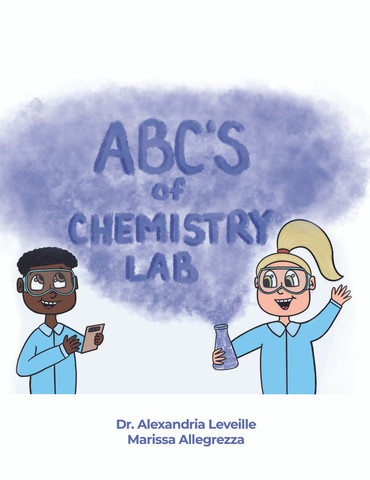The latest Dunkin’ product launch is sparking some chatter—and no, it’s not their looming pumpkin spice line: Their new boozy canned coffee and tea drinks will be hitting stores in a few weeks, according to the company’s announcement on August 14.
The Dunkin’ Spiked line will include eight flavors: Original, Caramel, Mocha, and Vanilla iced coffees; and Slightly Sweet, Half and Half, Strawberry Dragonfruit, and Mango Pineapple iced teas. The 12- and 19-ounce drinks will be sold at US retail stores in 12 states—Connecticut, Delaware, Florida, Maine, Massachusetts, New Hampshire, New Jersey, New York, Pennsylvania, Rhode Island, Texas, and Vermont—starting in late August and early September.
The beverages contain real coffee and tea, as well as a malt base. The boozy iced coffees will have 6% ABV, while the spiked teas come in slightly lower at 5%, according to a press release a Dunkin’ rep provided SELF with. For comparison, that’s roughly the same amount of alcohol you’d find in a beer.
Mixing coffee or tea with booze isn’t new, of course—cans of Twisted Tea have sold for decades, and espresso martinis have been a popular order at bars for even longer. But when one of the largest coffee brands in the country drops a line of spirits, it makes you think a little harder about the blend. Specifically, it brought up the question: Can that combination of alcohol and caffeine be a potentially dicey mix? SELF connected with a registered dietitian to get all of your questions answered. Here’s what you should know.
What happens when you mix caffeine with alcohol?
First, let’s talk about what you can experience with both of these substances. Caffeine is a stimulant, meaning that it revs up your central nervous system, boosting your alertness and energy levels. As a result, taking in too much of it—more on that below—can cause symptoms like insomnia, jitters, anxiety, fast heart rate, upset stomach, nausea, or headache, Amanda Sauceda, RD, a registered dietitian who works with people with digestive disorders, tells SELF.
On the other hand, alcohol has the opposite effect on your body, says Sauceda. Booze operates as a depressant, meaning that it slows down your central nervous system and brain activity. This can influence your mood and behavior, making it hard to think clearly, according to the National Institute of Alcohol Abuse and Alcoholism (NIAAA).
When you mix the two, caffeine can cover up the sedating effects of alcohol, says Sauceda. This can mask the warning signs of having taken in a little too much booze, like slow responses and mental fogginess, she explains. So it could make you think you can drink another round, and as a result, you can become more intoxicated than you realize.
Plus, the combination can increase heart rate and blood pressure, Sauceda says, which can raise the risk of heart attack or other issues, especially in folks with hypertension. What’s more, it can also make you more likely to become dehydrated, too, she says.
Okay, so that’s the caffeine and alcohol combo in general. What does that specifically mean for the new Dunkin’ Spiked line?
To our surprise, it turns out that their new beverages don’t quite pack in as much caffeine as you may think. One of their 12-ounce iced coffee beverages comes in at 30 mg, while their 12-ounce teas have anywhere between 15 and 30 mg. That puts them roughly on par with a 12-ounce can of Coke, which has 34 mg. In comparison, the company’s (non-alcoholic) 13-ounce iced coffee bottles contain 197 mg.
Since this new Dunkin’ Spiked line contains minimal amounts of caffeine, it’s less likely to cause a problem for people than alcoholic drinks with higher levels—say, if you were to mix booze with regular coffee, Sauceda says.
Still, you want to make sure these beverages don’t take you over the daily max recommendations for both caffeine and alcohol, says Sauceda. For the former, that’s no more than 400 mg—the equivalent of about two Dunkin’ coffees per day, according to the US Food and Drug Administration (FDA). As for alcohol, limit to one to two drinks per person per day, reports the Centers for Disease Control and Prevention (CDC).
Here’s what you should keep in mind if you plan to drink up.
Even though these beverages don’t contain a whole lot of caffeine, if you drink too much of them, they can still trigger symptoms we mentioned above, especially if you’re sensitive to the stimulant, Sauceda says. Plus, they still have as much alcohol as a beer, so they’re not something you should chug aimlessly.
And while they’re probably less risky than a drink that mixes alcohol with as much caffeine as a regular coffee, there are still some things you should keep in mind if you want to jump on this new boozy bandwagon, explains Sauceda.
First, consider how your Dunkin’ Spiked beverage fits your daily allotment of caffeine consumption, says Sauceda. As we mentioned earlier, you don’t want to exceed the recommended amount. So if you usually sip on multiple lattes in the morning, you may want to limit yourself to one if you plan to drink these boozy cans later on.
And don’t forget that these drinks are still alcoholic beverages, so the same guidelines you’d follow to stay safe if you were imbibing on beer, wine, or cocktails apply. Make sure you eat a meal that’s rich in protein beforehand, says Sauceda. This can help slow alcohol’s absorption in your body, as SELF reported previously. Skipping eating, on the other hand, can cause the alcohol to metabolize quicker—and make you feel inebriated faster. What’s more, because alcohol can be dehydrating, make a point to drink enough water earlier in the day and while you’re out and about, she continues.
Basically, if you’re looking forward to trying Dunkin’s new Spiked line, treat it like you would any alcoholic beverage, and remember to sip mindfully. Consider it along with the other drinks you’re enjoying that day—you don’t want to suffer some gnarly side effects because you accidentally went overboard.
Related:
Note: This article have been indexed to our site. We do not claim legitimacy, ownership or copyright of any of the content above. To see the article at original source Click Here













